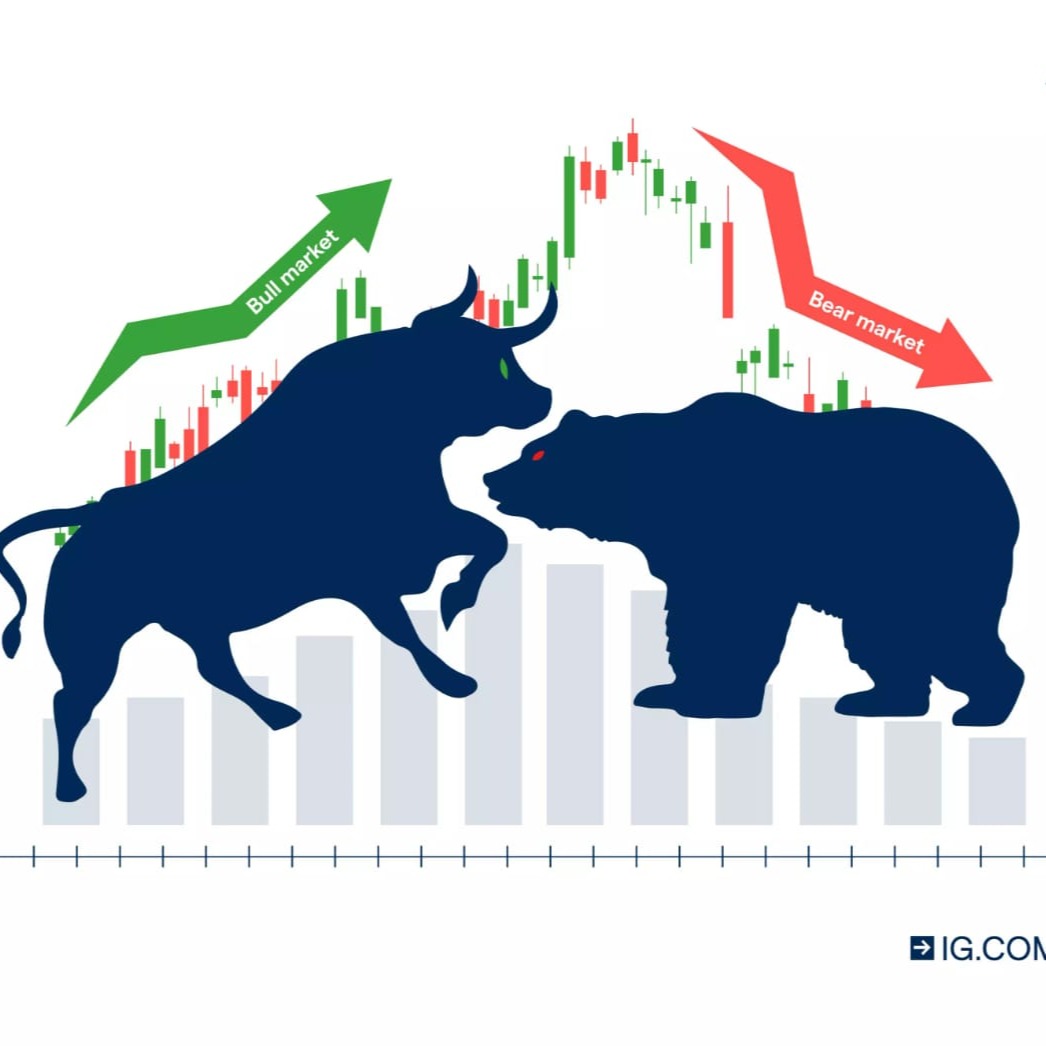
Precio de DeepBook ProtocolDEEP
EUR
Listada
€0.03435EUR
+2.76%1D
El precio de DeepBook Protocol (DEEP) en Euro es €0.03435 EUR.
DeepBook Protocol price EUR live chart (DEEP/EUR)
Última actualización el 2025-12-13 23:46:57(UTC+0)
DEEP/EUR price calculator
DEEP
EUR
1 DEEP = 0.03435 EUR. El precio actual de convertir 1 DeepBook Protocol (DEEP) a EUR es 0.03435. Esta tasa es solo de referencia.
Bitget ofrece las comisiones por transacción más bajas entre las principales plataformas de trading. Cuanto más alto sea tu nivel VIP, más favorables serán las comisiones.
Precio en tiempo real de DeepBook Protocol en EUR
The live DeepBook Protocol price today is €0.03435 EUR, with a current market cap of €154.77M. The DeepBook Protocol price is up by 2.76% in the last 24 hours, and the 24-hour trading volume is €11.17M. The DEEP/EUR (DeepBook Protocol to EUR) conversion rate is updated in real time.
¿Cuánto es 1 DeepBook Protocol en Euro?
A partir de ahora, el precio de DeepBook Protocol (DEEP) en Euro es de €0.03435 EUR. Puedes comprar 1 DEEP por €0.03435 o 291.12 DEEP por 10 € ahora. En las últimas 24 horas, el precio más alto de DEEP en EUR fue de €0.03566 EUR y el precio más bajo de DEEP en EUR fue de €0.03327 EUR.
¿Crees que el precio de DeepBook Protocol subirá o bajará hoy?
Total de votos:
Subida
0
Bajada
0
Los datos de votación se actualizan cada 24 horas. Reflejan las predicciones de la comunidad sobre la tendencia del precio de DeepBook Protocol y no deben considerarse un consejo de inversión.
Información del mercado de DeepBook Protocol
Rendimiento del precio (24h)
24h
Mínimo en 24h: €0.03Máximo en 24h: €0.04
Máximo histórico (ATH):
€0.2927
Cambio en el precio (24h):
+2.76%
Cambio en el precio (7d):
+1.06%
Cambio en el precio (1A):
-61.65%
Clasificación del mercado:
#164
Capitalización de mercado:
€154,774,579.91
Capitalización de mercado totalmente diluida:
€154,774,579.91
Volumen (24h):
€11,172,697.49
Suministro circulante:
4.51B DEEP
Suministro máx.:
--
Historial del precio de DeepBook Protocol (EUR)
El precio de DeepBook Protocol fluctuó un -61.65% en el último año. El precio más alto de DEEP en EUR en el último año fue de €0.2927 y el precio más bajo de DEEP en EUR en el último año fue de €0.02919.
FechaCambio en el precio (%) Precio más bajo
Precio más bajo Precio más alto
Precio más alto 
 Precio más bajo
Precio más bajo Precio más alto
Precio más alto 
24h+2.76%€0.03327€0.03566
7d+1.06%€0.03263€0.03802
30d-33.99%€0.02919€0.05346
90d-71.65%€0.02919€0.1296
1y-61.65%€0.02919€0.2927
Histórico-40.70%€0.009158(2024-10-14, 1 año(s) atrás)€0.2927(2025-01-19, 329 día(s) atrás)
¿Cuál es el precio más alto de DeepBook Protocol?
El máximo histórico (ATH) de DEEP en EUR fue €0.2927, el 2025-01-19. En comparación con el ATH de DeepBook Protocol, el precio actual de DeepBook Protocol es menor en un 88.26%.
¿Cuál es el precio más bajo de DeepBook Protocol?
El mínimo histórico (ATL) de DEEP en EUR fue €0.009158, el 2024-10-14. En comparación con el ATL de DeepBook Protocol, el precio actual de DeepBook Protocol es mayor en un 275.09%.
Predicción de precios de DeepBook Protocol
¿Cuándo es un buen momento para comprar DEEP? ¿Debo comprar o vender DEEP ahora?
A la hora de decidir si comprar o vender DEEP, primero debes tener en cuenta tu propia estrategia de trading. La actividad de trading de los traders a largo plazo y los traders a corto plazo también será diferente. El Análisis técnico de DEEP de Bitget puede proporcionarte una referencia para hacer trading.
Según el Análisis técnico de DEEP en 4h, la señal de trading es Vender.
Según el Análisis técnico de DEEP en 1D, la señal de trading es Venta fuerte.
Según el Análisis técnico de DEEP en 1S, la señal de trading es Vender.
Promociones populares
Precios mundiales de DeepBook Protocol
How much is DeepBook Protocol worth right now in other currencies? Last updated: 2025-12-13 23:46:57(UTC+0)
DEEP a ARS
Argentine Peso
ARS$58.09DEEP a CNYChinese Yuan
¥0.28DEEP a RUBRussian Ruble
₽3.21DEEP a USDUnited States Dollar
$0.04DEEP a EUREuro
€0.03DEEP a CADCanadian Dollar
C$0.06DEEP a PKRPakistani Rupee
₨11.28DEEP a SARSaudi Riyal
ر.س0.15DEEP a INRIndian Rupee
₹3.65DEEP a JPYJapanese Yen
¥6.28DEEP a GBPBritish Pound Sterling
£0.03DEEP a BRLBrazilian Real
R$0.22Cómo comprar DeepBook Protocol(DEEP)

Crea tu cuenta gratuita en Bitget
Regístrate en Bitget con tu dirección de correo electrónico/número de teléfono móvil y crea una contraseña segura para proteger tu cuenta.

Verifica tu cuenta
Verifica tu identidad ingresando tu información personal y cargando una identificación válida con foto.

Convierte DEEP a EUR
Elige qué criptomonedas tradear en Bitget.
Preguntas frecuentes
¿Cuál es el precio actual de la moneda DeepBook Protocol?
El precio actual de la moneda DeepBook Protocol se puede consultar en la Exchange Bitget o en otras plataformas de criptomonedas de confianza.
¿Qué factores influyen en el precio del DeepBook Protocol?
Los factores que influyen en el precio del DeepBook Protocol incluyen la demanda del mercado, la dinámica de la oferta, las tendencias generales del mercado y los desarrollos dentro del ecosistema de DeepBook Protocol.
¿Aumentará el precio del Protocolo DeepBook en el futuro?
Si bien es difícil predecir los movimientos de precios futuros, los inversores a menudo analizan las tendencias del mercado y los desarrollos de proyectos dentro del Protocolo DeepBook para hacer predicciones informadas.
¿Dónde puedo comprar DeepBook Protocol al mejor precio?
Puedes comprar DeepBook Protocol a precios competitivos en el intercambio Bitget, donde puedes aprovechar varias opciones de negociación.
¿Es el Protocolo DeepBook una buena inversión?
La viabilidad del Protocolo DeepBook como inversión depende de la investigación individual y las condiciones del mercado. Siempre considere su tolerancia al riesgo antes de invertir.
¿Cómo se compara el precio de DeepBook Protocol con su máximo histórico?
El precio de DeepBook Protocol se puede comparar con su máximo histórico revisando los datos de precios históricos en Bitget Exchange o en varias plataformas de análisis de criptomonedas.
¿Cuáles son las predicciones de precios para DeepBook Protocol en el próximo año?
Las predicciones de precios para DeepBook Protocol varían ampliamente y dependen de diversas condiciones del mercado y análisis. Se aconseja mantenerse actualizado con las noticias del mercado y los análisis de expertos.
¿Cómo puedo rastrear las tendencias de precios del Protocolo DeepBook?
Las tendencias de precios del Protocolo DeepBook se pueden rastrear utilizando herramientas de análisis de mercado y directamente en plataformas como Bitget Exchange.
¿Hay algún evento próximo que pueda afectar el precio del DeepBook Protocol?
Eventualidades próximas, como actualizaciones tecnológicas o anuncios de asociaciones, podrían afectar el precio del DeepBook Protocol. Esté atento a las noticias de los canales oficiales.
¿Cuál es la capitalización de mercado de DeepBook Protocol y cómo afecta su precio?
La capitalización de mercado de DeepBook Protocol refleja su valor de mercado total, lo que puede influir en la percepción de los inversores y en la dinámica de precios. Puedes encontrar información actual sobre la capitalización de mercado en Bitget Exchange.
¿Cuál es el precio actual de DeepBook Protocol?
El precio en tiempo real de DeepBook Protocol es €0.03 por (DEEP/EUR) con una capitalización de mercado actual de €154,774,579.91 EUR. El valor de DeepBook Protocol sufre fluctuaciones frecuentes debido a la actividad continua 24/7 en el mercado cripto. El precio actual de DeepBook Protocol en tiempo real y sus datos históricos están disponibles en Bitget.
¿Cuál es el volumen de trading de 24 horas de DeepBook Protocol?
En las últimas 24 horas, el volumen de trading de DeepBook Protocol es de €11.17M.
¿Cuál es el máximo histórico de DeepBook Protocol?
El máximo histórico de DeepBook Protocol es €0.2927. Este máximo histórico es el precio más alto de DeepBook Protocol desde su lanzamiento.
¿Puedo comprar DeepBook Protocol en Bitget?
Sí, DeepBook Protocol está disponible actualmente en el exchange centralizado de Bitget. Para obtener instrucciones más detalladas, consulta nuestra útil guía Cómo comprar deepbook-protocol .
¿Puedo obtener un ingreso estable invirtiendo en DeepBook Protocol?
Desde luego, Bitget ofrece un plataforma de trading estratégico, con bots de trading inteligentes para automatizar tus trades y obtener ganancias.
¿Dónde puedo comprar DeepBook Protocol con la comisión más baja?
Nos complace anunciar que plataforma de trading estratégico ahora está disponible en el exchange de Bitget. Bitget ofrece comisiones de trading y profundidad líderes en la industria para garantizar inversiones rentables para los traders.
Precios de criptomonedas relacionadas
Precio de XRP (EUR)Precio de Stellar (EUR)Precio de Solana (EUR)Precio de WINkLink (EUR)Precio de Litecoin (EUR)Precio de Bitcoin (EUR)Precio de Fartcoin (EUR)Precio de Pi (EUR)Precio de Toncoin (EUR)Precio de Bonk (EUR)Precio de Cardano (EUR)Precio de Pepe (EUR)Precio de Dogecoin (EUR)Precio de Shiba Inu (EUR)Precio de Terra (EUR)Precio de Smooth Love Potion (EUR)Precio de Kaspa (EUR)Precio de dogwifhat (EUR)Precio de Worldcoin (EUR)Precio de Ethereum (EUR)
¿Dónde puedo comprar DeepBook Protocol (DEEP)?
Sección de video: verificación rápida, trading rápido

Cómo completar la verificación de identidad en Bitget y protegerte del fraude
1. Inicia sesión en tu cuenta de Bitget.
2. Si eres nuevo en Bitget, mira nuestro tutorial sobre cómo crear una cuenta.
3. Pasa el cursor por encima del ícono de tu perfil, haz clic en "No verificado" y haz clic en "Verificar".
4. Elige tu país o región emisora y el tipo de ID, y sigue las instrucciones.
5. Selecciona "Verificación por teléfono" o "PC" según tus preferencias.
6. Ingresa tus datos, envía una copia de tu ID y tómate una selfie.
7. Envía tu solicitud, ¡y listo! Habrás completado la verificación de identidad.
Compra DeepBook Protocol por 1 EUR
¡Un paquete de bienvenida con un valor de 6,200 USDT para los nuevos usuarios de Bitget!
Compra DeepBook Protocol ahora
Las inversiones en criptomoneda, lo que incluye la compra de DeepBook Protocol en línea a través de Bitget, están sujetas al riesgo de mercado. Bitget te ofrece formas fáciles y convenientes de comprar DeepBook Protocol, y hacemos todo lo posible por informar exhaustivamente a nuestros usuarios sobre cada criptomoneda que ofrecemos en el exchange. No obstante, no somos responsables de los resultados que puedan surgir de tu compra de DeepBook Protocol. Ni esta página ni ninguna parte de la información que incluye deben considerarse respaldos de ninguna criptomoneda en particular.
DEEP/EUR price calculator
DEEP
EUR
1 DEEP = 0.03435 EUR. El precio actual de convertir 1 DeepBook Protocol (DEEP) a EUR es 0.03435. Esta tasa es solo de referencia.
Bitget ofrece las comisiones por transacción más bajas entre las principales plataformas de trading. Cuanto más alto sea tu nivel VIP, más favorables serán las comisiones.
Recursos de DEEP
Clasificación de DeepBook Protocol
4.4
Etiquetas:
Contratos:
0xdeeb...p::DEEP(Sui Network)
Bitget Insights

BGUSER-SNXYLE69
2025/10/02 04:50
friends
$DEEP its my opinion 1$ and 10$ 😜 so what's ur opinion ? comment now 0.12
DEEP+2.54%

ScalpingX
2025/09/29 08:33
$DEEP - Mcap 426,44M$ - 88%/ 43,4K votes Bullish
SC02 M5 - pending Long order. Entry is within HVN + not affected by any weak zone, estimated stop-loss around 1.47%. The uptrend is in the 199th cycle, advance amplitude 11.85%.
#TradingSetup #CryptoInsights
DEEP+2.54%

Jahanzaib_Gondal
2025/09/18 04:25
$ZKC: Game Time. Analyzing the New $ZKC Power on Bitget.
Subtitle: The buzzer beater has sounded. $ZKC the native token for the elite zkSync ecosystem, is now live for trading on Bitget. We break down the pre-game analysis and the potential plays ahead.
Let's get straight to the scouting report.
The Player: Who is $ZKC?
$ZKC isn't just another name on the roster. It's the utility token for zkSync Era, a top-tier Layer-2 blockchain using advanced zero-knowledge (ZK) proofs to scale Ethereum. Think of it as the fuel and the franchise player for a faster, cheaper Ethereum experience.
· Position: Utility Token / Ecosystem Driver
· Key Stats: Powers network security, pays gas fees via account abstraction, and governs the future of the zkSync protocol.
· Draft Position: Highly touted prospect with a strong technical foundation.
The Market: First Quarter Analysis
The opening minutes of a new listing are all about volatility and momentum. $ZKC is hitting the court with a few key advantages:
· Strong Bench (Ecosystem): zkSync isn't a rookie. It has a deep bench of DeFi apps, NFTs, and users already playing on its network. This isn't a build-from-scratch project.
· Crowd Hype (Demand): Launching on a major exchange like Bitget provides instant liquidity and access to a global audience of traders. Expect a high-volume opening.
· The Game Plan (Tokenomics): The token is designed to be used, not just held. Real utility creates real demand.
Key Resistance Level (The Defense to Break): $0.95 - $1.05 This is the first major test.A strong breakout above this zone on high volume could signal a run-up.
Key Support Level (The Home-Court Advantage): $0.65 - $0.75 This is the floor.Holding this level is critical for maintaining bullish momentum. A break below could see a retreat to find stronger support.
The Playbook: Price Prediction Scenarios
This is not financial advice. This is a game plan based on market mechanics.
· Bull Case (The Championship Run): If Bitcoin holds strong and the altcoin market rallies, $ZKC's unique narrative could make it a standout performer.
Short-term target: $1.50 - $2.00. This would require sustained buying pressure and overall market greed.
· Base Case (A Solid Season): The most likely scenario is consolidation after the initial listing frenzy. Price action chops between $0.80 and $1.20 as the market digests the initial supply and demand. This is healthy for long-term growth.
· Bear Case (An Off Night): If the broader crypto market sells off, all new listings are vulnerable. A break below key support could see a test of $0.50 or lower. This is a risk every trader must account for.
Final Buzzer: How to Play It
1. Watch the Volume: High volume on green candles = strong buying interest. Low volume on pumps = a potential fakeout.
2. Track BTC: If Bitcoin tanks, it's hard for any altcoin, especially a new one, to rally. Know the macro climate.
3. Manage Your Risk: This is a new, volatile asset. Size your position accordingly. Don't go all-in on the first play.
$ZKC is now live. The game is on.
BTC-0.01%
FUEL0.00%

YASIRALICTRADER🌟
2025/09/18 03:13
📊🔥 BTC Exchange Reserves Drop to Multi-Year Lows: What It Means for Price Action
The Bitcoin market has just hit a critical milestone: exchange reserves are now at multi-year lows. This development is more than just a data point—it’s a powerful signal of shifting market dynamics, investor sentiment, and long-term price potential. For traders, institutions, and retail holders alike, this trend could reshape how Bitcoin behaves in the months ahead. Let’s dive deep into what this means. 🚀
---
✨ 📉 BTC Exchange Reserves Explained
What are Exchange Reserves?
Exchange reserves represent the total amount of Bitcoin held in wallets controlled by centralized exchanges.
Why it Matters?
When reserves drop, it typically means fewer coins are available for immediate selling, suggesting that investors are moving their BTC to cold storage for long-term holding.
---
🚀 🐂 Supply Shock in the Making?
With fewer coins on exchanges, liquidity shrinks.
A shrinking supply often leads to a supply-demand imbalance, which can trigger sharp upward movements in price when demand increases.
This pattern has historically aligned with bullish rallies, particularly when reserves hit extreme lows.
---
📊 On-Chain Data Insights
Multi-year lows in reserves reflect a trend similar to pre-bull market phases in previous cycles.
Large holders (whales) are accumulating and moving BTC to cold wallets.
Institutional-grade custodianship is on the rise, indicating growing long-term confidence.
---
⚡ Key Investor Takeaways
📉 Less BTC available to sell → Lower selling pressure.
📈 Higher probability of price appreciation as demand meets reduced supply.
🐋 Whale accumulation signals smart money positioning for the next leg up.
---
🌍 Broader Market Implications
A decline in reserves could reduce volatility in the short term, as panic selling becomes harder with fewer coins on exchanges.
Long-term, it may amplify bullish momentum if mainstream demand surges—especially with ETFs and institutional inflows accelerating.
This aligns perfectly with the “digital gold” narrative as more investors treat Bitcoin as a long-term store of value rather than a trading asset.
---
🔮 Outlook: What’s Next for BTC?
If exchange reserves continue falling, expect higher resistance to downside pressure.
Potential catalysts like ETF inflows, Fed policy shifts, and global liquidity trends could magnify the impact of low reserves.
The stage may be set for another historic BTC rally, with scarcity as the fuel and institutional adoption as the spark.
---
✅ Final Thoughts
The drop in BTC exchange reserves is not just a technical metric—it’s a macro signal. Investors are pulling Bitcoin off exchanges because they believe in its long-term potential. As reserves decline, the supply squeeze narrative strengthens, setting Bitcoin up for possible explosive price movements in the near future.
👉 In short: Low reserves = strong hands = bullish signal. 🐂🔥
---
BTC-0.01%
FUEL0.00%

BGUSER-VSKY448K
2025/09/18 01:41
$SPON another deep dumpbin
DEEP+2.54%
Trading
Earn
DEEP está disponible para hacer trading en el Exchange de Bitget, y pueden mantenerse en custodia en Bitget Wallet. Exchange de Bitget es, además, una de las primeras plataformas CEX que admite trades de DEEP.
Puedes hacer trading de DEEP en Bitget.DEEP/USDT
SpotDEEP/USDT
Futuros USDT-MPrecios de las monedas recién listadas en Bitget








